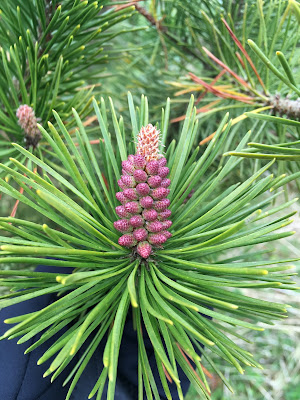Suitably encouraged, Our Lass and I ventured to a more local spot, the Burn of Wideford, to see if we could kickstart our flight season. Parking by Inganess Bay, we made our way upstream along the burn, serenaded by Sedge Warblers and treated to close views of Sand Martins.
There were many insects busily going about their lives: butterflies, bees, hoverflies and crane flies, so we knew that conditions were reasonably favourable. As we reached the bridge across the burn that carries the main road to the airport, we increased our level of intensive staring, as here was a sunny spot with shelter from the southerly breeze. Ample bankside vegetation tumbled down to the water's edge, providing perching possibilities for any insect wishing to bask in the warmth of a Spring morning.
Our persistence paid off, as a movement near some fern fronds resolved itself into a Large Red Damselfly adjusting its position. Yay! and Phew! Aligning itself along the central vein of the frond, the damsel had been virtually invisible, we wouldn't have spotted it, if it had remained motionless.
Once across the road, we continued along the path, now flanked by a few trees. These provided a bit more shelter for lush undergrowth, which in turn gave plenty of sunny perches for resting insects. Before long, we found another five damsels.
We then decided to try our luck on another short stream, actually a canalised drain, which flows from the town of Kirkwall into Scapa Bay. A trail runs adjacent to the burn, allowing decent access to monitor the water and vegetation. It's not the most wild of places, but I have recorded damselflies here in the past. Sadly, we drew a blank as far as odes were concerned, but we had a flypast from a Sparrowhawk, spotted a long-jawed spider (I think) and, bizarrely, a Common Eel.


































